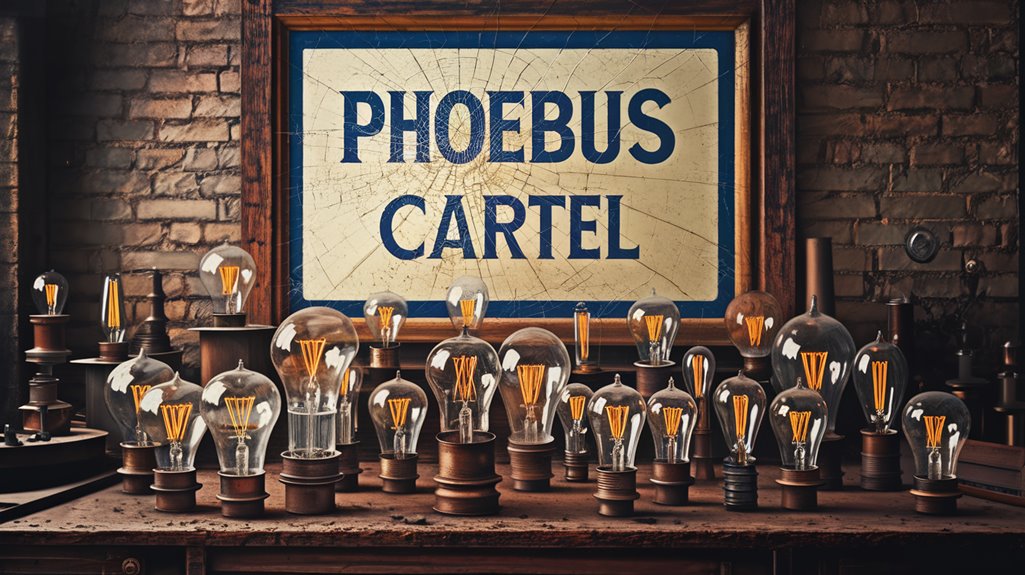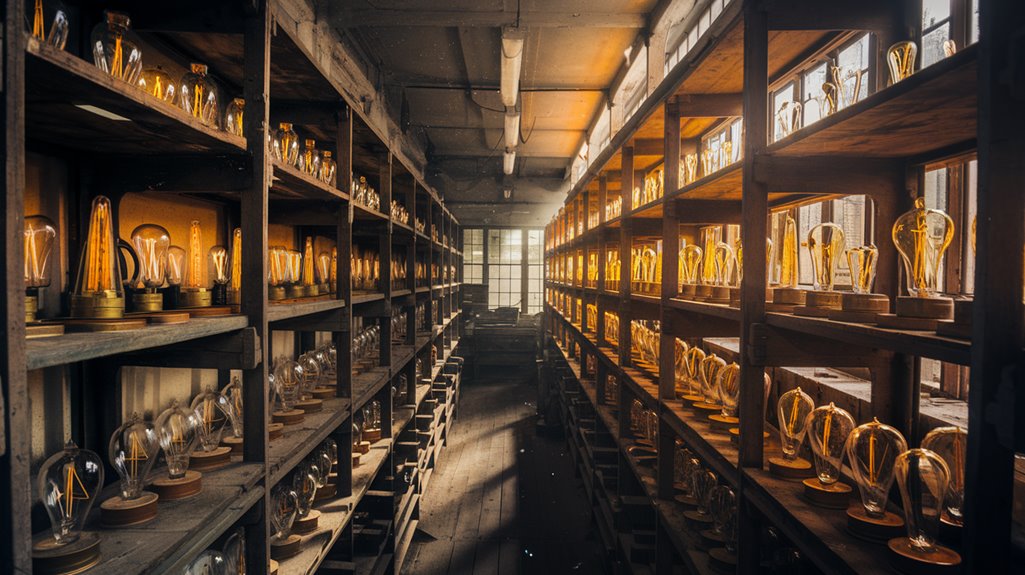The Bulb Cartel: Planned Obsolescence Exposed
You've probably never questioned why your lightbulbs burn out so quickly, but there's a dark secret behind their limited lifespan. In 1925, a powerful group of manufacturers made a calculated decision that would change consumer culture forever. They devised a plan to deliberately shorten bulb life from 2,500 to 1,000 hours, marking one of history's most successful—and controversial—business conspiracies. What followed wasn't just about lightbulbs; it sparked a revolution in how companies approach product longevity.
The Birth of Lighting's Dark Secret: The Phoebus Cartel

Three major lighting manufacturers changed the course of consumer history when they formed the Phoebus cartel in Geneva on January 15, 1925. General Electric, Osram, and Philips joined forces with other manufacturers to control the global light bulb market, building upon Osram's earlier price-fixing group, the Internationale Glühlampen Preisvereinigung.
You might be shocked to learn that the cartel formation wasn't just about territorial control – it marked the beginning of deliberate product manipulation. The manufacturers claimed to pursue noble industry goals, but their true intentions were far more sinister.
The group's most significant action was standardizing bulb lifespan at 1,000 hours, despite the capability to produce longer-lasting bulbs. They enforced this through rigorous testing and fined companies that exceeded the limit.
This strategic move introduced planned obsolescence to the lighting industry, forcing you to replace bulbs more frequently while boosting their profits. A 1949 US District Court ruling found that General Electric violated the Sherman Anti-Trust Act for its role in manipulating the industry.
Engineering Failure: How 2,500 Hours Became 1,000
While early light bulbs could shine for an impressive 2,500 hours, the Phoebus cartel deliberately engineered them to fail after just 1,000 hours.
Through calculated adjustments to voltage and current, engineers compromised their professional ethics to serve corporate greed. You might've thought these shorter lifespans were natural, but they were actually part of a calculated scheme.
Key industry players like Philips, Osram, and GE participated in this widespread deception. The cartel masked this reduction in durability as an improvement in efficiency and brightness, directly contradicting principles of engineering ethics.
They even fined manufacturers who dared to produce longer-lasting bulbs. This manipulation affected more than just your wallet – it set a dangerous precedent for planned obsolescence across industries. Just like today's LED bulbs that have a real-world lifespan of 4-6 years despite claims of lasting decades.
Today's consumer awareness about such practices stems from lessons learned from the Phoebus cartel's deliberate engineering failure.
Power, Profits, and Control: Inside the Global Lightbulb Conspiracy
Behind closed doors in Geneva on December 23, 1924, the world's largest lightbulb manufacturers formed the Phoebus cartel – a secretive alliance that would control the global lighting industry for decades.
Through systematic corporate greed and consumer deception, industry giants like Osram, Philips, and General Electric divided global markets and enforced strict production quotas.
You'd think competition would drive innovation, but the cartel did the opposite. They established a central testing laboratory in Switzerland where they'd monitor and fine manufacturers whose bulbs lasted longer than 1,000 hours – even though bulbs could last up to 2,500 hours. The cartel's research specifically focused on developing weaker filament designs to ensure shorter lifespans.
The cartel's power grip continued until 1950 when a U.S. court found General Electric in violation of anti-trust laws. This historic case of planned obsolescence changed how we view corporate conspiracies forever.
The Cartel's Legacy in Modern Manufacturing
The Phoebus cartel's manipulative tactics didn't end with its dissolution – they sparked a lasting transformation in how companies approach product design and manufacturing.
General Motors revolutionized planned obsolescence with annual model changes, establishing a blueprint that many industries would follow.
While planned obsolescence remains prevalent, you'll notice a significant shift in today's market driven by consumer resistance and environmental awareness.
Modern manufacturers face mounting pressure to abandon the cartel's profit-focused model.
The cartel's original goal of reduced lamp life to 1,000 hours fundamentally changed how products were engineered for decades to come.
You're now seeing companies like Philips embrace sustainable manufacturing through long-lasting LED technology, directly challenging the old 1,000-hour standard.
This shift isn't just about consumer demand – it's reinforced by stricter regulations and warranty requirements across many countries.
Yet, the cartel's influence lingers as some industries still struggle to balance profitability with durability.
You'll find the tension between planned obsolescence and sustainable practices continues to shape manufacturing decisions worldwide.
Breaking Free: The Fall of Phoebus and Its Impact Today

Despite its intended thirty-year lifespan, the Phoebus cartel crumbled in 1939 when World War II disrupted its global operations.
However, you'd be mistaken to think this marked the end of planned obsolescence in the lighting industry.
The cartel's dissolution sparked increased regulatory reforms, with courts taking action against key players like General Electric for violating anti-trust laws.
Original member companies like Osram and Philips remained major lighting manufacturers after the cartel's end.
Engineer Thomas Edison's invention in 1879 had initially launched a highly competitive light bulb market before the cartel took control.
Yet the practice of limiting bulb lifespans persisted for decades afterward.











